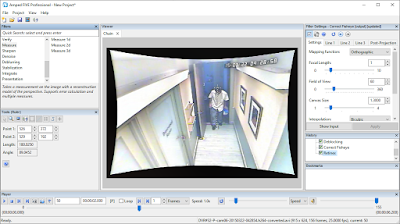Get the most out of your training budget and save the planet whilst doing it.
We live in interesting times. There's a couple of cultural themes that are dominating the planning sessions in government and private industry. Governments and private firms are concerned about sustainability and austerity.
In order to satisfy sustainability initiatives, agencies are restricting travel. Given that airline travel requires airplanes to consume carbon-based fuel in mass quantities, traveling to training is seen as damaging to the climate. Additionally, most government agencies will not allow a private firm to come in to a government facility and re-sell training seats in order to bring down the costs of training to small agencies. Thus, small agencies are faced with not being able to travel, and not being able to host due to the costs of purchasing on-site training.
In terms of austerity, many states aren't doing well financially. The pension crisis is hitting, homelessness is a real problem, and governments are focusing their attention - and their budgets - on the many social problems they are facing. Agencies are tasked with doing more, with less funds with which to do it. The days of "baseline budgeting" are drawing to an end as state / local governments face severe shortfalls.
I've been providing on-site training for over a decade now. I can't quantify the amount of times I've been asked to hold a seat, or the times that a class was full on the one date that worked for a student who couldn't get their registration completed in time.
On-line training and education solves all of these problems. According to the U.S. Department of Education, the most common reasons providers cite for offering online courses are to meet student demand, provide access to those who can't get to campus, and to make more courses available.
We've heard you. We're here to help.
Yesterday, I announced that our most popular course - Introduction to Forensic Multimedia Analysis with Amped FIVE - has found a home in our state-of-the-art learning management system. By offering our Intro to FIVE course on-line:
- Travel is no longer a problem. Consider how much travel, lodging, per-diem costs and how many additional people can be trained at your agency with the savings.
- Time is no longer a problem. With micro learning, you learn at your own pace and on your own schedule. You can easily accommodate an on-line course of instruction into your daily schedule. Studies show, there's better retention of information in adult learners with micro learning.
- Sustainability is no longer a problem. With on-line training and education, the learning experience comes to you ... helping your agency and government meet it's sustainability goals.
With interactive text, videos, and assignments, the learning experience moves beyond a simple demonstration event (webinar / information session) to create real growth in your knowledge, skills, and experience.
I'm excited about this news. I hope that you are too.
You can find out more, or sign up today, by clicking here.
See you in class, my friends.
keywords: audio forensics, video forensics, image forensics, audio analysis, video analysis, image analysis, forensic video, forensic audio, forensic image, digital forensics, forensic science, amped five, axon five, training, forensic audio analysis, forensic video analysis, forensic image analysis, amped software, amped software training, amped five training, axon five training, amped authenticate, amped authenticate training
keywords: audio forensics, video forensics, image forensics, audio analysis, video analysis, image analysis, forensic video, forensic audio, forensic image, digital forensics, forensic science, amped five, axon five, training, forensic audio analysis, forensic video analysis, forensic image analysis, amped software, amped software training, amped five training, axon five training, amped authenticate, amped authenticate training




